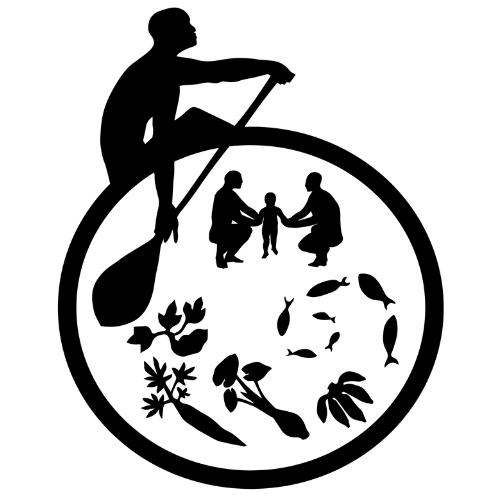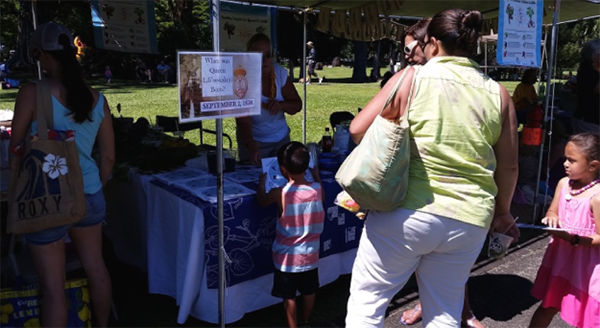As our work in the CHL optimized communities draws to a close and the holiday season is upon us, we reflect on the breadth and magnitude of the work that has been accomplished by the CHL team and all of our community partners. The sheer amount of leadership, persistence, and dedication channeled towards enhancing local capacity, while improving the health of our children and the communities in which we live, is evidence of this regions commitment to improving health in a sustainable, Pacific kind of way. 🙂
Finally, we thank all of our Pacific “cousins” for the generous support and prayers you have extended to the CNMI post-Typhoon Soudelor. We wish all of you good health and happiness this holiday season and in the days ahead.
Si yu’us maase yan olowaay,
Team CNMI
From the CHL Program
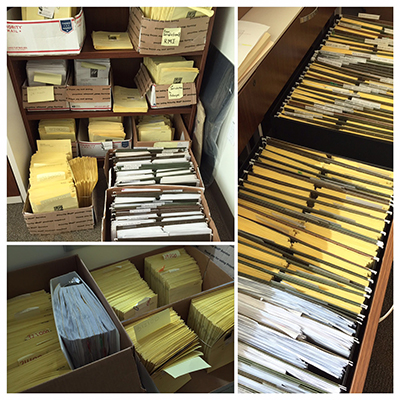
Kim Yonemori, RD and Dr. Carol Boushey, of Nutrition Support Shared Resource (NSSR), note that the NSSR staff have been kept busy with receiving, reviewing, and organizing the CHL Food and Activity Logs (FALs) over the past year and a half. Over 4,000 FALs have been received by the NSSR and have undergone or are currently undergoing review. With so many logs to juggle and not enough file cabinet space, staff members have creatively organized them by jurisdiction, some in the very boxes in which they arrived. The unsung heros of this work include Jennifer Fujimoto, RD; Jennifer Williams Mafnas, RN, RD, CNSC*; Donna Au, MPH, RD*; and University students and interns, Christine Badua, Karlo Dieron*, Bryce Downing*, Melissa Hamada, Katie Ho*, Kasey Kawamoto*, Megan LaRose*, Nathan Lee*, Carianne Matsuo, and Ross Villiger. In the spirt of CHL, every task is a team effort. *former NSSR staff that have worked on CHL.
Alaska
CHL Team Alaska
As the snow gets deeper and the days shorter in Alaska, we’re focusing efforts on making a lasting impact in CHL-Alaska communities. We partnered with the UAF Cooperative Extension Service to film six cooking demonstrations. Each video features readily accessible vegetables and fruit and highlights that cooking is a fun and easy family activity. These videos will be shown on the local TV station and will be available on Youtube and on DVD, so that they may continue to be a useful resource for families with young children.
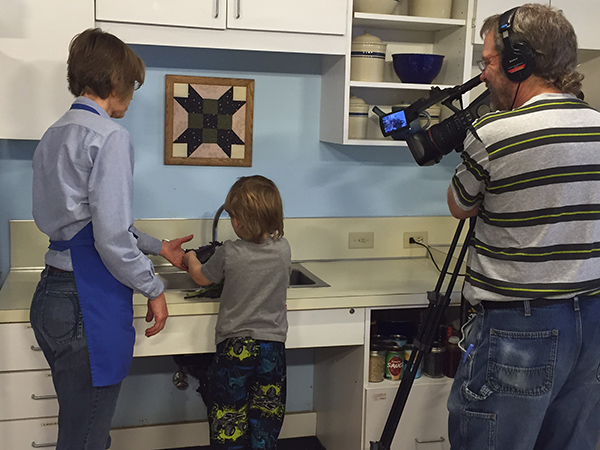
Tasty fruit-and-herb infused water continues to be a hit at community events in Mat-Su. In order to sustain this health-promoting initiative, the Alaska team is putting together sugar-shocker displays to distribute among community partners. These displays demonstrate the amount of sugar in popular sweetened drinks. One partner, Iditarod Elementary, plans to rotate their display between classrooms and use it at health fairs. We hope that making this resource available in the community will encourage future efforts to promote water instead of sugar-sweetened beverage consumption.
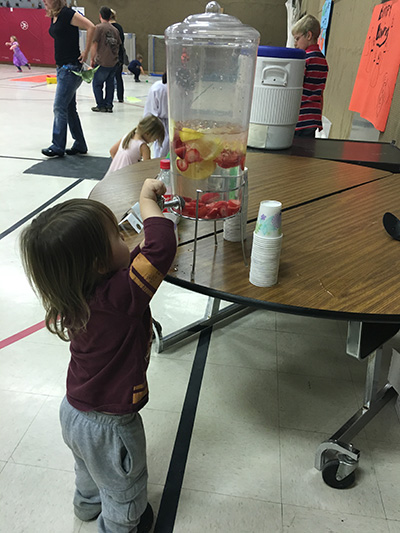
Finally, CHL offered a SPARK-based physical activity in early childhood training. Dr. Claudio Nigg traveled close to 3000 miles from Hawaii to Anchorage – leaving 80+ degree weather and arriving in a blizzard–to lead the training in Mat-Su. Thirty-five teachers from CCS Early Learning attended. The training was well-received, garnering very positive feedback including: “This was a great workshop, fun and got us moving, gave us ideas to bring back to the classroom,” and “This is the best workshop I’ve had in my 5 years here.” By using this train-the-trainer model, teachers will have the skills to continue incorporating more physical activity into their early childhood classrooms long after CHL has ended.
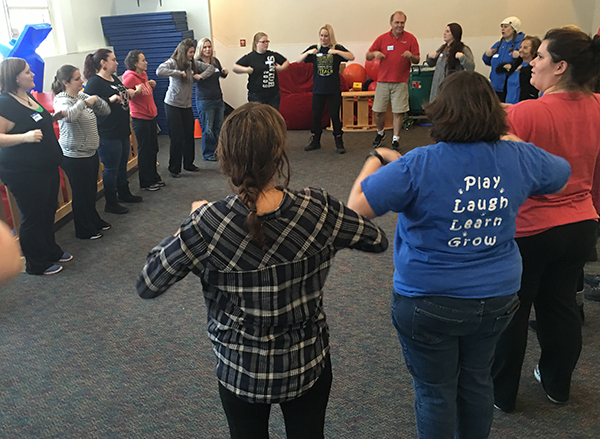
American Samoa
CHL Team American Samoa

Deep Roots of Change – The American Samoa CHL family is preparing to return to the next chapter of its work life, but the things that it has done for the community will not be forgotten. The extension and research programs at ASCC’s Land Grant Program, which were in American Samoa long before the CHL Program arrived, will continue to reach out to the community to promote healthy living. These programs, however, will be receiving staff members who gained valuable experience from the CHL Program.
Community Partners
The Early Childhood Education Program was enriched greatly by the wealth of knowledge and training that the CHL Program provided to each of the schools located in the intervention and optimized villages. ECE schools will continue to prepare children for kindergarten and will have resources available to disseminate to the children and their parents. The CHL Program also hosted a role model training workshop that was designed to inform religious clergy members about the CHL Program. In addition to learning about the program, religious leaders were also given practical advice to help introduce intervention activities into their church congregations. The American Samoa Non-Communicable Disease Coalition is aware of the intervention work that CHL has introduced to religious clergy members, and the coalition would like to get some of these church leaders involved in active discussions to help encourage more church leaders who might be willing to introduce intervention activities into their church congregations. Food assistance programs such as the American Samoa WIC Program and the American Samoa Nutrition Assistance Program have been operating in the territory since the mid-1990s and will likely continue for many years to come.
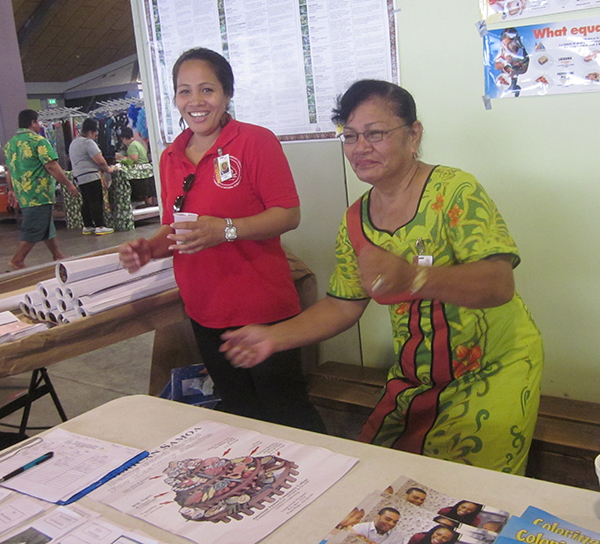
Commonwealth of the Northern Mariana Islands
CHL Team Commonwealth of the Northern Mariana Islands
The CNMI recently experienced a life-changing disaster that temporarily altered the way of life. Devastating winds of Typhoon Soudelor damaged 90% of the island community of Saipan. The island was completely without electrical power for a week, most places were without power for two months. Many people were without roofs and had to stay in crowded shelters or tents outside of destroyed homes. The opening of schools had to be postponed. Businesses were closed down. Saipan was in a state of catastrophe. This event caused much hardship among the islanders; however it did not break the spirit of the people. In fact, it brought people together. With the assistance of many volunteers from on and off-island, we are on the path to recovery.
As much as our community has changed in the short months post Typhoon Soudelor, the Children’s Healthy Living (CHL) Program has made significant transformations in addressing childhood obesity in the CNMI. By working with community organizations such as TASA, SACAN, and the Kagman CHL Role Models, we have been able to increase access to physical activity opportunities for young children ages 2-8. These improvements included the rehabilitation of two beach parks, a community basketball court, and within schools. Schools without playground equipment utilized hallways to create several types of hopscotch and four-square to prompt physical activity while also infusing learning. The investments CHL made by building the local capacity of community members provided organizations with tools to assist with furthering their efforts in creating and sustaining changes within their respective villages. For example, TASA has and continues to acquire local grants to support their efforts in addressing health. They have managed to successfully implement a summer program focused on health two years in a row which they plan to expand to run year round.
![Life sized physical activity board game at Koblerville Elementary School [KES] open field.](http://chl-pacific.org/wp-content/uploads/2015/11/edited-life-sized-pa-board-game.jpg)

Typhoon Soudelor was a catastrophic event but it was not strong enough to remove the advances that the CHL project has made to improve the environments that our community lives, works, and plays in.
Freely Associated States of Micronesia
CHL Team Freely Associated States
The news story will focus on the impact and footprints of CHL in three of the six FAS jurisdictions: Palau, Yap, and Kosrae.
In their own words, here is a snippet of what the CHL Outreach staff had to say…
1. What impact has CHL made on your jurisdiction and or respective communities?
Palau: “…the study alone was very helpful in making aware the parents involved in the study of their children’s diets and behaviors with regards to physical activity and sedentary moments.”
Yap: With CHL initiatives, one important impact is the baseline data that will help to prove and help people make decisions about the food and lifestyles they are living now. With CHL’s target objectives, small communities can realize the outcome of their actions and help them make the [food] choice with knowledge and not just because it’s there.
Kosrae: Thorough and standardized practices that we have to deliver when dealing with children or specifically the anthropometric measurements.
2. When CHL ends next March, what will be left behind?
Palau: “…more informed parents …, and a huge amount of very important data that the [local] partners of CHL can incorporate into the existing data …to further help inform the movement toward a healthier Palau in the effort towards its NCD battle.”
Kosrae: “… staff empowered with skills (standardized with anthropometric measurement taking) or even the dietary recall interviewing.”
3. What changes have been implemented that will have long lasting effects because of CHL in your jurisdiction/ communities?
Kosrae: “…good human relations involved and built within the community, agencies, departments, schools and the parents . . . an asset to our future health promotion activities with these groups.”
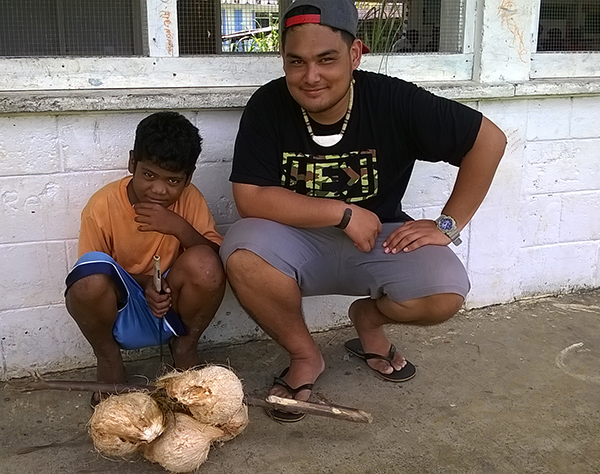
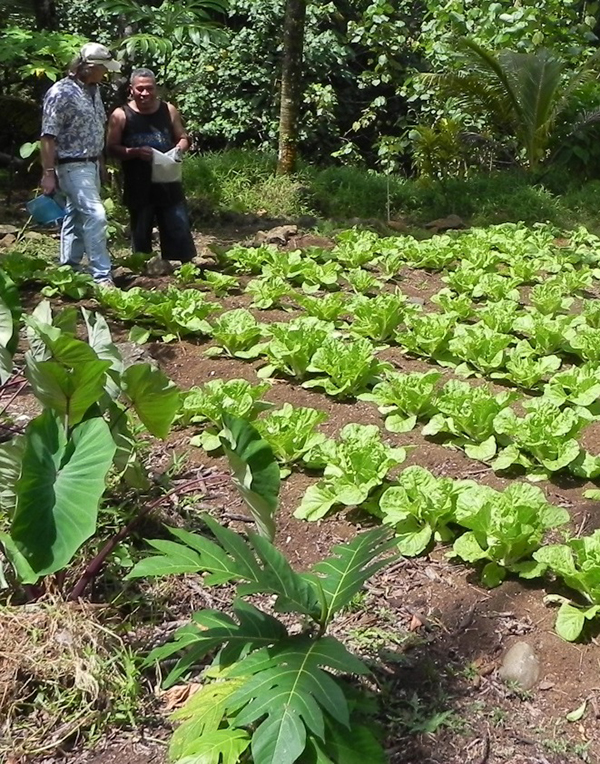
Guam
CHL Team Guam
Transitioning CHL’s Efforts into Local Organizations – Guam CHL has built partnerships with organizations committed to child wellness through the island’s Non Communicable Disease (NCD) Consortium. We embedded the CHL message into the NCD strategic plan through our presence on many of the action groups. Consistent attendance of NCD meetings and conferences created relationships with our partners, and provide research-based support to the group.
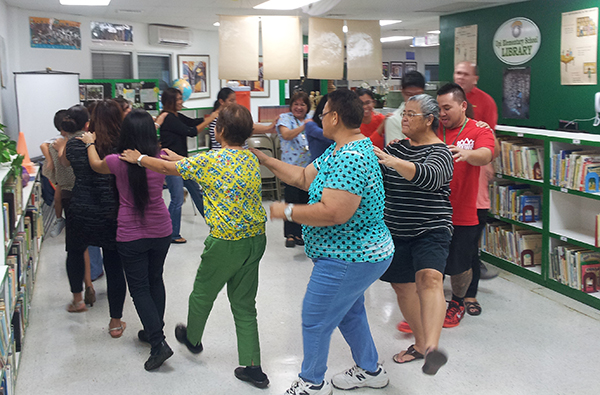
Through NCD’s lobbying efforts, the NCD Physical Activity Group allocated $300,000 of Legislated Funds (PL32-179) to promote health, wellness and physical activity in GDOE Schools. Of these funds, $280,000 will be used for the Early Start Fit for Life Initiative. An additional $200,000 was awarded to Physical Activity Group to fund the Walk to Wellness Program through the “Getting Guam Healthy Incentives Program” (GGHIP).
Early Start Fit for Life initiative’s (ESFL) goal is to help GDOE provide students with 25 minutes a day of structured physical activity. The initiative will focus on 8 elementary schools (including all CHL optimized communities) and training 120 educators. The initiative has four components:
- Build GDOE’s capacity in data monitoring, the initiative will purchase equipment, software, and a centralized server to standardize data collection, archival and analysis of body mass index (BMI) and health screenings.
- Pilot a CHL identified physical activity curriculum (SPARK), by training 120 educational professionals (3 graduate credits) and providing the curriculum and equipment for teachers’ and schools’ use.
- Pilot an elementary School Program Consultant in physical activity, to coordinate educational professionals in physical activity.
- Fund a mini-grant program (School Health Intervention Program).
The 12-week Walk to Wellness Program utilizes fellowship and competition, to motivate participants to increase physical activity and attend wellness trainings. Its goal is to increase the number of minutes that families are physically active, by meeting the following objectives.
- Improve the built environment to provide greater walking availability and accessibility to village members.
- To improve individuals knowledge to make sound lifestyle choices to decrease their risk for chronic diseases.
- Provide motivation and competition to sustain the desire for physical activity.
UOG and DPHSS will pilot funding (50-50 split) a physical activity faculty to Coordinate the following interventions:
- Walking Path: Identifying new/existing path and provide signage and other improvements to provide safe/easy access for physical activity.
- Let’s Walk: Village step challenge piloted in several villages to promote physical activity as part of a daily routine for vulnerable populations (Medicaid) and all others.
- Let’s Talk: A weekly education program on making healthy wellness choices, to precede the week’s group walk.
- The Challenge: Village competition to motivate an entire community to make healthy living a priority by a village walking competition.
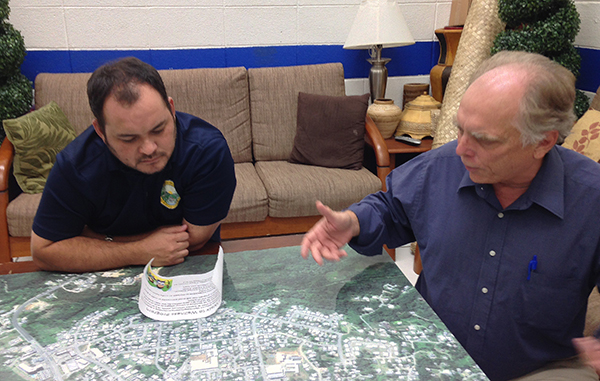
Hawai‘i
CHL Team Hawai‘i and CHL wide Coordinating Center
As the CHL program reaches the end of its funding and more fully passes on leadership of child obesity prevention activities to the community, it will provide continuous support and always remain an available advisor. Over the past years, CHL has built on the existing strengths in the community and worked with numerous partners to create long-term sustainable change that will continue to foster a healthy place for Hawai‘i’s children and families.
Activities that have received support from the two Hawai‘i CHL intervention communities will remain, thereby keeping children’s health at the forefront of our community’s priorities. These activities support each of CHL’s four cross-cutting strategies, with much more to be accomplished!
Policy
CHL Hawai‘i policy efforts surrounded preschool wellness policies, Head Starts, and lowering sugar-sweetened beverage (SSB) consumption. To improve preschool wellness, the teams worked with preschool administrators to help implement wellness policies and worked with teachers on their own wellness along with wellness in the classroom. At the Head Starts, CHL Hawai‘i revised the meal vendor contract to replace fruit juice with fruit; limit number of fatty meats served per week; serve family style meals; and have the vendor provide portion size training to teachers and parents. Work to decrease SSB consumption consisted of supporting legislative efforts proposed by the Obesity Task Force. All of these actions to influence policy still have work to do that can be carried on by our community.
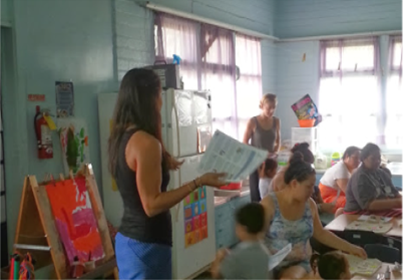
Preschool school wellness can be sustained by continuing to promote and support preschool teachers to be role models for healthy behaviors. With support from the community, wellness policy implementation can expand to all preschools and childcare centers in Hawai‘i. Such support can be in the form of developing community advocates for health policies at all levels (organization, community, state, and federal) and in the form of connecting community partners to preschools to promote healthy behaviors outside of the classroom. While the contract changes to the Head Start vendors are complete, there is still work to be done to ensure that children maintain a balanced diet at school. For example, efforts are still needed to increase federal and state reimbursements to food vendors and work with the Department of Education to improve the school lunch program. Until the next legislative season, the community can continue to promote demand for and access to good drinking water and ban the serving of SSBs at community events. To prepare for the legislative season, direct benefits of SSB legislation for the community can be identified and written clarity on use, if it were to pass, can be discussed.
Environment
Our environment plays an important role in our health, as it determines what is accessible and available to us. In Hilo, CHL Hawai‘i promoted gardening and hydroponics by working with Uncle Howard Pea, Ka ‘Umeke Charter School, and the Panaewa Farmer’s Market. In Nanakuli, the team supported beautification of the Nanakuli Intermediate and High School, worked with Ka‘ala Farm to create family gardens, supported Puu Heleakala Community in building the Disney/KABOOM playground, worked with partners to support walking trails and paths on the Wai‘anae Coast, worked with partners to preserve watersheds, and supported WCCHC efforts to bring water bottle filling stations to Nanakuli schools. Both Hawai‘i CHL intervention communities promoted access to affordable local produce at their partner farmer’s markets.
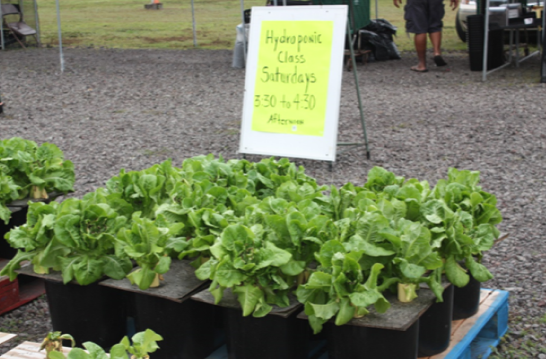
So where might the community take it from here? Partnerships in Hilo can advocate for better walking paths or sidewalks in Keaukaha and work to have the Mayor’s office promote this effort. To maintain access to farmer’s market in Hilo, Panaewa Farmer’s Market needs continuous promotion, along with EBT establishment. In Nanakuli, healthy land and water usage on the Wai‘anae Coast can continue to be promoted and community advocates for watershed protection can be developed. There is clarity needed on rules to improve county parks, advocacy for walking trails and cultural corridors, and promotion needed from Neighborhood Boards for walking and biking paths. To continue promoting water consumption and gardening, the community can work toward expanding water bottle filling stations to the rest of DOE schools and increase support for school and community gardens. Similar to Hilo, Nanakuli can sustain access to affordable produce at the Wai‘anae Farmer Market by supporting EBT and local produce initiatives.
Promote the CHL Message
The CHL message has been disseminated in a variety of ways, with some ways being more successful than others. A couple of CHL Hawai‘i’s successes include developing the Na Ki‘i Ola figures, cards, fliers, posters, spinners, games, and FaceBook page and conducting a social marketing campaign. Both communities also published a quarterly Role Model newsletter and promoted community activities to partners and community networks. In Nanakuli, CHL Hawai‘i promoted drinking water at community events and through the Wai Wai campaign, and also trained role models to deliver CHL messages. In Hilo, a Google+ page for families to share and learn was created and articles to Hawai‘i Tribune-Herald were submitted. In order to continue promoting the CHL message, there are CHL materials available for use on the CHL web page. The Hawai‘i community continues to have open community events that can incorporate CHL messages and adopt or develop more Na Ki‘i Ola uses. Community activities also have great potential to continue identifying health themes for events/activities.
Capacity Building
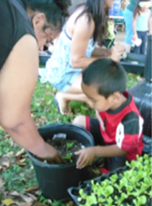
Last but not least, the CHL Hawai‘i team focused on capacity building as a means of encouraging existing partners to collaborate and take on the role as community champions. Efforts related to capacity building in Hilo included supporting community workshops at Panaewa Farmer’s Market, training 10 families to be role models, conducting family workshops about kalo, and developing workshops around the Ho’opuku kalo concept. In Nanakuli, CHL Hawai‘i supported ‘Ohana Days at Ka‘ala Farm, developed Ka‘ala interns as youth role models, led mini-workshops at family engagement days, conducted preschool provider worksite wellness trainings, held community role model workshops, supported Waianae Wellness and Place Based Learning Alliance vision of “A Healthy Child Learns,” and supported family and teacher workshops at the Learning Center at Ma‘ili. Both Hawai‘i communities participated in Makahiki events, which included family workshops, and supported partner events.
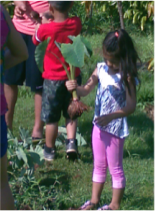
These successes were only possible with the support and participation of those in our Hawai‘i community. Sustaining capacity building in Hilo can be done by delivering the Ho‘opuku kalo program to more families, continuing to support partner workshops and activities, and promoting Panaewa Farmer’s Market as a community learning center. In Nanakuli, support of the Alliance can continue. There are many overlapping activities that may occur in both Hawai‘i communities. For example, as role models were found to be community champions, it is important that more are developed. The Hawai‘i community might also approach maintaining coalition building by working to obtain funding for family workshops, supporting school groups and programs that promote health, connecting families to place through place-based learning and workshops, incorporating CHL intervention strategies into new initiatives, partnering with preschools to engage families, and developing a common evaluation tool to show impact of workshops an programs.
CHL Hawai‘i has made various efforts to improve the health of our community’s children and families, and could not have been done without our partners! Support from the community has been key to the changes made over the past few years, and can certainly be sustained with continued efforts. As we all grow and take on maintaining healthy lifestyles, Hawai‘i’s people will surely continue to flourish in this beautiful place we call home.
